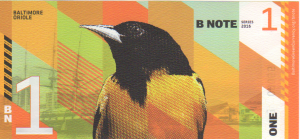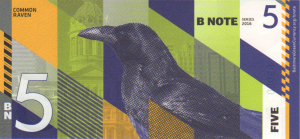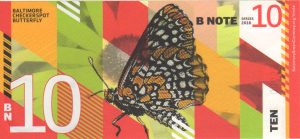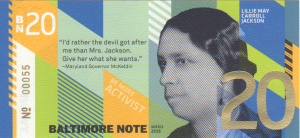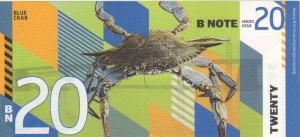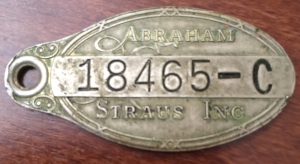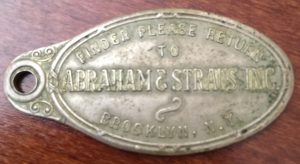Weekly World Numismatic News for May 16, 2021
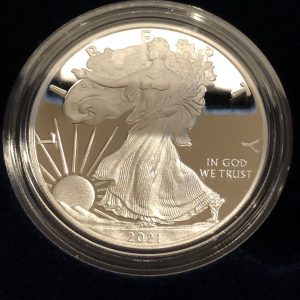 It has been a long 16-months. During that time, a virus caused a worldwide pandemic still being felt in much of the world. Thanks to science and the government removing barriers that slow the development process, the pharmaceutical industry found vaccines to reduce infection rates.
It has been a long 16-months. During that time, a virus caused a worldwide pandemic still being felt in much of the world. Thanks to science and the government removing barriers that slow the development process, the pharmaceutical industry found vaccines to reduce infection rates.
The increase in vaccinations and the reduction of infections has government easing restrictions that shut down the country for three months in 2020. As the restrictions ease, coin shows are appearing. Small shows have been running for a few months, but last week, the ANA announced the World’s Fair of Money would go on.
Over the last six months, hobby and other spending have dramatically increased. The demand for goods has outpaced the supply. Big-ticket items like housing and vehicles are experiencing low inventories as people leave their homes and spend money. I regularly pass a few used car lots on my way to work, and their inventory is the lowest I have seen.
Numismatics is also seeing a surge. Even though analysts note that lower sales of bullion coins from last year, the demand for collector coins has caused prices to skyrocket. Services that monitor online markets say that the 2021-W American Silver Eagle Proof coin price is averaging $140-160 or 100-percent over their issue price.
Because silver is in high demand, dealers are charging high premiums over the spot price and sellout out of their inventory. When I recently looked at buying circulated coins whose value is tied to the silver spot price, the premiums were the highest that I have seen.
It has been a long time since silver coins were this popular. There is no telling how high this market will go with the expanding market for non-circulated legal tender (NCLT) and bullion coins drawing people into collecting.
And now the news…
 → Read more at jpost.com
→ Read more at jpost.com
 → Read more at axios.com
→ Read more at axios.com
 → Read more at theglowup.theroot.com
→ Read more at theglowup.theroot.com
Will you help?
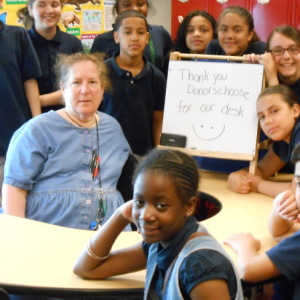 There are no bigger heroes in daily society than teachers.
There are no bigger heroes in daily society than teachers.
Teachers are entrusted with our children to teach them while working through the societal, social, and political issues to ensure that our future is educated. In the face of attack by people who think they know better and politicians who want them to do more with less, most teachers are dedicated individuals who are teaching for love. They cannot be doing it for the money because we misguidedly shortchange teachers who will use part of their meager salaries to buy supplies.
With the start of a new school year approaching, I would like to ask Coin Collectors Blog readers to help support a teacher in Philadelphia who is trying to raise money to take a field trip to the U.S. Mint and the Federal Reserve.
Mrs. Janas, a teacher at Juaniata Park Academy in Philadelphia, is trying to raise money to lease school busses to transport her students on these field trips. Her fundraiser says that her “students would love to expand their knowledge and be able to identify with the real world today and visit places around the area.” Visiting the Philadelphia Mint would be a great field trip!
The fundraiser is being hosted on a website called DonorsChoose.org. Those not familiar with the site, it was started in 2000 by a public school teacher without the resources to purchase books for his students. He built DonorChoose.org to bring together those who want to help with public school teachers who are trying to do their job with the little resources.
DonorsChoose.org is a 501(c)(3) not-for-profit corporation making all donation tax deductible to the maximum extent of the law. As part of the service, DonorsChoose.org has staff that vets every request and can work with the vendors to bring down prices. With some charities you worry about how much money is going to the project versus how much is being used in other fees. Not with DonorsChoose.org. On every project page they show you exactly where the money is spent. They are very transparent with their operations!
I learned about DonorsChoose.org several years ago and have tried to donate to at least one project every year.
Mrs. Janas is asking for $400 to lease the busses for the trips. Along with the other fees and a suggested 15-percent donation to DonorsChoose.org, the project can be funded for $512.92. However, donations to this project are being matched by Dottie Lutz, an advocate for education in the Philadelphia area. This project can be funded for a total of $256.46!
Aside that these children are the promise of our future, maybe a few would become interested in numismatics. Seeing the exhibits and learning how money is made can inspire these children to become collectors. And as inner-city students in a minority community, adding this diversity to the hobby is one of the best gifts we can give the hobby.
MY CHALLENGE
It will take at least nine readers of the Coin Collectors Blog with donations of $25.00 to fund this project after I make my donation. If my readers fund this project, I will contact Mrs. Janas and offer to travel to Philadelphia to give a presentation about numismatics in daily life to her students. Of course I will bring a few nicer items but the concentration will be on the convergence between numismatics, math, and economics.
UPDATE: I made my donation! I left a message on the page pointing to this post.
Will you please join me?
Proof was in the change
During a visit to a numerically named convenience store for a cold beverage, I noticed that there were a few “golden dollars” in the register. The cashier hesitated to give them to me but I told her I was a collector and was interested especially since the one on top was very shiny. After trading three paper notes for the coins my suspicion was correct. The coin is a 2009-S James K. Polk Presidential dollar.
While the coin can be used for one dollar in trade, whomever purchased it paid more and could have sold it for at least $5 rather than placing it in circulation. While we do not know the conditions that caused this coin to be in the cash register at the time I stopped in the store, it has been rescued from circulation and will find its way into a collection. I will probably add it to my coin club’s charity auction this December.
BNote sings new praises for Baltimore
Last April, the Baltimore Green Currency Association, sponsor of the BNote, initiated an Indiegogo campaign to fund their next issue that would feature significant women in Baltimore history. Although the campaign fell a little short, an anonymous donor funded more than $10,000 of the balance to print the currency.
Notes are a local currency that can be used at participating businesses in and around Baltimore. Currently, there are over 230 businesses accepting the BNote for goods and services. Consumers can receive BNotes as change for a transaction or may visit one of the official cambios (money exchange locations) to exchange dollars for BNotes. For every $10 that is exchanged for BNotes, you will receive a 10-percent bonus, which means if you exchange $10 you will receive BN11. You can also exchange BNotes for dollars at a reverse rate (receive $10 for every BN11 in BNotes).
The first BNotes were issued in April 2011 featuring the designs of Fredrick Douglas on the BN1 note and Edgar Allan Poe on the BN5 note. The reverse of the notes features a Baltimore oriole (the bird, not a ball player) on the $1 BNote and a raven on the reverse of the $5 BNote. For this new issue, Douglass and Poe remain on the note but the design changed to incorporate the vertical bars of the Calvert coat of arms that is incorporated in the Maryland flag.
- Baltimore BN1 BNote with portrait of Frederick Douglass
- Back of Baltimore BN1 BNote featuring a Baltimore Oriole (batting leadoff)
- Baltimore BN5 BNote with portrait of Edgar Allan Poe
- Back of Baltimore BN5 BNote with image of a Common Raven (Nevermore!)
The new BN10 and BN20 notes are similar in design with new colors on the background. Bea Gaddy is featured on the front of the BN10 and the Baltimore Checkerspot Butterfly, the official Maryland State Insect, on the reverse. Lillie May Carroll Jackson appears on the front of the BN20 note and a Blue Crab, the official Maryland State Crustacean, on the reverse.
Bea Gaddy was known as the Mother Teresa of Baltimore. A single mother of five who ended up in baltimore in 1964, she was discovered by a Baltimore attorney who encouraged her to go to college. Gaddy earned her bachelor’s degree in human services from Antioch University in 1977.
- Baltimore BN10 BNote with portrait of Bea Gaddy
- Back of Baltimore BN10 BNote with image of a Baltimore Checkerspot Butterfly, the Maryland State Insect
Gaddy saw the need to help others and joined the East Baltimore Children’s fund where she used her own home as a distribution point for clothing and food for the poor. She founded a homeless shelter which eventually became the Bea Gaddy Family Center, which is still in operation today.
In 1981, using the $290 she won on a 50-cents lottery ticket, she bought enough food to feed 39 neighbors and eventually opened a community kitchen for the needy. From Thanksgiving dinners to opening furniture bank refurbishing used furniture and rehabbing abandoned row houses, Gaddy was a catalyst to help the poor in Baltimore. Eventually, she became an ordained minister to perform marriages and hold funerals at no cost to the families.
Gaddy was diagnosed with breast cancer in 1998. With the cancer in remission, Gaddy ran for Baltimore City Council in 1999 and won. Unfortunately, the cancer returned and she died in October 2001 at the age of 68. Even though Bea Gaddy is gone, her family and friends continue to help the poor in Baltimore using the same love and compassion Bea showed throughout her life.
Dr. Lillie May Carroll Jackson was born in Baltimore in 1889 and is consider the mother of the civil rights movement. From 1935 through 1970, Jackson was the president of the Baltimore chapter of the NAACP and at the forefront of nearly every fight to end Maryland’s Jim Crow laws. Through her leadership, the Baltimore NAACP sued to remove the color barrier from admissions to the University of Maryland Law School, won cases to force Baltimore public schools to grant equal pay to white and black teachers, and was fundamental to having Baltimore to be the first school system south of the Mason-Dixon line to integrate their schools following the landmark Brown v. Board of Education decision.
- Baltimore BN20 BNote with portrait of Lillie May Carroll Jackson
- Back of Baltimore BN20 BNote with image of a Blue Crab, the Maryland State Crustacean
Jackson fought for equal pay and fair employment practices even though Maryland Governor Theodore McKeldin (R) was once quoted as saying, “I’d rather have the devil after me than Mrs. Jackson. Give her what she wants.” In the end, Jackson won most of the fights.
She is also credited with playing critical roles in the passage of federal civil rights legislation in the 1960s.
Jackson died from a heard attack in 1975. After she died, her will called for her Baltimore home to be turned into a civil rights museum. The museum opened in 1978 with memorabilia from Jackson’s life and documents chronicling her life’s work. It was the only museum named after a woman and the only civil rights museum in Maryland. The museum closed in the 1990s because it was too difficult to maintain as a private facility. The museum was transferred to Morgan University who refurbished the building and reopened it on June 11, 2016.
As part of the Indigogo campaign, I selected the option to receive the a full set of the second series BNotes with matching serial numbers. The notes I received, which feels like they were printed on heavy stock paper, a type of paper my wife said was “resumé” paper. All four notes feature serial number BN00055. For all you liar’s poker players, I call a full house.
What do you mean I can’t call a full house?!
Another 2018 Commemorative design competition
![]() Thanks to congressional lawmaking, the U.S. Mint is holding competition for the two commemorative coin programs that will be issued in 2018. Earlier this year, the competition was opened for designs of the 2018 World War I Centennial Commemorative silver dollar. Now, the U.S. Mint has begun a competition for the 2018 Breast Cancer Awareness Commemorative Coins.
Thanks to congressional lawmaking, the U.S. Mint is holding competition for the two commemorative coin programs that will be issued in 2018. Earlier this year, the competition was opened for designs of the 2018 World War I Centennial Commemorative silver dollar. Now, the U.S. Mint has begun a competition for the 2018 Breast Cancer Awareness Commemorative Coins.
Signed into law on April 20, 2016 by President Obama (Public Law 114-148), the law requires the U.S. Mint to have an “juried competition” for a design “emblematic of the fight against breast cancer.” As part of the design, the law says that “The Secretary shall encourage three-dimensional designs to be submitted as part of the proposals.”
There is a caveat: you have to be an artist of some type and a U.S. citizen 18 years of age or older. You can read the Official Rules on the U.S. Mint website, but in summary Phase I of the competition is the evaluation of three-to-five examples of your work submitted digitally to the U.S. Mint. You have to be able to submit a digital portfolio. Even if your work is good and you think you can be part of the competition, you either have to be able to take a good picture of your work or find a photographer who can help.
An “expert” will review the submissions and select no more than 20 artists for the second phase.
In Phase II, those selected artists will be asked to submit one design along with a plaster model of both the obverse and reverse for the proposed coin that includes all of the necessary elements required of a coin. Only one artist’s design will be selected. The winning artist will receive “not less than $5,000.” If your design is selected, you will have your name etched in numismatic lore for being the designer of the coin. For this, your initials will appear on the coin, the Certificate of Authenticity, and in places like the Red Book!
Full details can be found on the U.S. Mint website.
Summary of the Breast Cancer Awareness Commemorative Coin Program
- Commemorative coins issued in 2018
- Design, emblematic of the fight against breast cancer, selected from a juried competition with no less than $5,000 going to winning design
- “The Secretary shall encourage three-dimensional designs to be submitted as part of the proposals”
- 50,000 $5 “pink gold” coins with an alloy of at least 75-percent gold with a $35 surcharge
- 400,000 one-ounce silver dollars made with not less than 90-percent silver with a $10 surcharge
- 750,000 clad half-dollar coins with a $5 surcharge
- Surcharges will be distributed to the Breast Cancer Research Foundation of New York, to further breast cancer research funded by the Foundation.
Pink gold can has been more commonly described as “rose gold.” Rose gold is an alloy of 75-percent gold with 20-percent copper and 5-percent silver. The color can be adjusted by changing the ratio of copper and silver.
Charge it!
For as long as there has been money or commerce, there has been some form of credit. Whether it was borrowing a few coins until the next payday or today’s credit cards, credit has been a fuel of economic development for quite some time. The financial industry is built on credit and charging customers to borrow money and spread the payments out over time. By some estimates the average household owes over $16,000 in credit card debt.
The United States was founded on credit. During the founding of the country currency had been limited to coins with an intrinsic value based on their gold, silver or copper content. As the King of England tried to tax the colonies to pay for the wars in Europe, the colonies looked for ways of financing their own governments to provide services. they issued paper notes. These notes functioned as currency but actually were bills of credit, short-term public loans to the government. For the first time, the money had no intrinsic value but was valued at the rate issued by the government of the colony in payment of debt. Every time the colonial government would need money, they would authorize the printing of a specified quantity and denomination of notes that it would use to pay creditors. The emission laws also included a tax that would used to repay the bill of credit and the promised interest.
Later, the era we now refer to as Obsolete Banknotes (or Broken Banknotes), were currency issued by banks under permission of the Department of the Treasury that were supposed to be backed by the assets of the issuing bank. Banks were supposed to be able to back at least 90-percent of the value of the notes with hard currency. But the banks were not honest with the Treasury Department, issued more currency than assets, and many went out of business because they could not cover the value of the notes issued.
Credit run amok has been the cause of nearly every major market downturn in history including the most recent dire recession that began in 2008.
The concept of institutionalizing consumer debt was first written about in Looking Backward, 2000 to 1887 by Edward Bellamy. Bellamy, a writer from Massachusetts, wrote about Julian West, a young American who falls into a deep, hypnotic sleep and wakes up in the year 2000. As part of West’s experience, Bellamy describes purchases being made using a credit card. Bellamy’s credit card was limited to the amount on deposit. The description is more like a debit or secured credit card of today. After the book became popular, the concept of consumer credit began to be institutionalized.
Hotels and other higher-end retailers were first. They would create medals or tokens that could be carried in the pocket or have a hole to include them on a keychain. Much like the Colgate tokens previously written about, the use of metal tags and tokens began at the beginning of the 20th century and was stopped by the War War II efforts.
Credit tokens were nondescript items with the name of the establishment and the user’s account number which lead to a number of problems. Since the account number was engraved into the tag, it was up to the cashier to write down the account number. Mistakes would lead to unpaid bills. A later improvement was to include raised letters that could be rubbed onto the paper using a pencil or carbon paper in order to record the number correctly, a feature that would be added to the plastic charge plate before the invention of the magnetic strip.
These tokens did not include the customer’s name. Although many can be mailed to the company so that the keys could be returned to the original owner, thieves would keep the tokens and use them. Stores would later have to produce lists of invalid or stolen charge numbers to verify the sale at the register. In the day before computers, this was a time consuming task.
Stores continue to think the risks are worth dealing with since credit purchases appear to be more popular than cash-based purchases.
One of the early adopters of credit purchases was Abraham & Straus, Inc. Founded in 1865 by Abraham Abraham in Brooklyn, the store was operated on Fulton Street as a small clothing outlet until its later flagship store was built closer to downtown Brooklyn in 1883. As part of expanding the store and funding the move, Abraham received funding from Nathan and Isidore Straus. When the company reopened at 422 Fulton Street the was renamed Abraham & Straus, the name that was used until its closing in 1995.
- A&S Charge Token with account number
- If found return it to A&S in Brooklyn!
Known as A&S throughout the New York metropolitan area, it was a little more upscale from other discount stores of the time. Although the stores expanded as far as the Philadelphia region, it would not see the same success as the New York-area stores. A&S was a favorite amongst the burgeoning middle class of the post-World War II Baby Boomer generation especially for women’s clothes. I have a lot of memories waiting outside of the A&S with my father at the Green Acres Mall in Valley Stream, NY as my (late) mother would go shopping in A&S. And the family car, a black 1963 Chevy Impala with red interior, did not include air conditioning!
Apparently, I survived those shopping trips along with my recent find an on old A&S credit token. While searching through a cigar box of old tokens, I found this pre-World War II item. Aside from bringing back the memories, and reminder of the hot days waiting for my mother to try on nearly every dress in the store, I though this would be a perfect addition to my collection of New York numismatic memorabilia.
Remember, you do not have to collect coins to have fun with numismatics!



